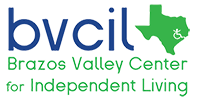Finding and maintaining good, steady employment can be hard for anyone, but if you have a disability, it can take some extra problem solving. National Disability Employment Awareness Month (NDEAM) helps to make employers more aware of people’s abilities to promote inclusion and diversity in the workplace. The theme for NDEAM 2013 is, “Because We Are EQUAL to the Task”
The US Department of Labor organizes NDEAM each October, with support and additional activities in each state. To learn more about NDEAM, please visit:
http://www.dol.gov/odep/
To learn more about NDEAM in Texas, please visit:
http://www.governor.state.tx.










